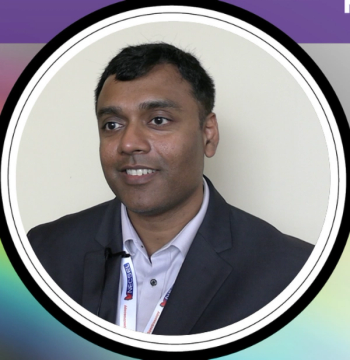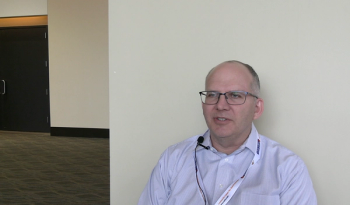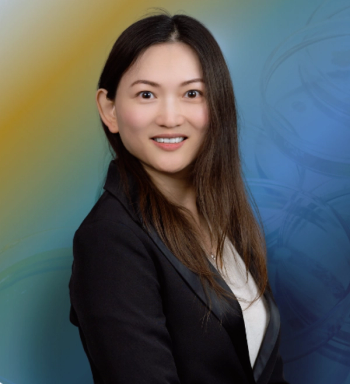
- Spectroscopy-12-01-2018
- Volume 33
- Issue 12
The Rise of Raman Spectroscopy in Biomedicine
Raman spectroscopy is promising some dramatic breakthroughs in biomedical applications. Juergen Popp and his team are determined to realize that promise, by working to make the technique a powerful tool for cell biology and clinical studies.
In recent years, more and more academic research has been conducted on the use of Raman spectroscopy for biomedical applications. Effectively moving the technique from the research laboratory to the clinic, however, requires overcoming a number of challenges, ranging from dealing with fluorescence interference to automating the process enough to make it easy for medical staff to implement. Juergen Popp and his team at the Leibniz Institute of Photonic Technology and the Friedrich-Schiller University, in Jena, Germany, have been working to address these challenges, with the aim of making Raman spectroscopy a powerful, comprehensive tool for cell biology and clinical studies. He recently spoke to Spectroscopy about this work.
What are the main challenges associated with using Raman spectroscopy in biomedical applications? What specific benefits can the technique offer?
Raman spectroscopy has become one of the most academically researched analytical methods in the last decade. Raman spectra depict molecular vibrations that are characteristic of the molecular system under investigation. In other words, Raman spectra can be seen as a kind of "molecular fingerprint." Raman spectroscopy enables label-free detection of the molecular composition of complex samples with little or no sample preparation. The major challenge in the application of Raman spectroscopy to investigate biomedical samples, such as cells and tissue, is the possible occurrence of an interfering fluorescence background and the low signal yields, compared to, for example, fluorescence spectroscopy.
However, decisive technical advances have been made to overcome these limitations in recent years, particularly through the realization of highly efficient spectrometers and filters, and the implementation of novel detector technologies. These advances have led to a significant reduction in the recording times of Raman spectra for biological samples. Further challenges toward a routine application of Raman spectroscopy for biomedical analysis are the automation of the complete process chain, that is, from sampling to measurement toward an automated analysis of the Raman spectra. The last point is of great importance, because the differences in the Raman spectra of different biological cells or tissue types are very small and invisible to the naked eye, and therefore require research on tailored statistical evaluation methods (chemometric models). In the last few years, my research team and I have successfully addressed all of these challenges.
You recently developed a simple and fast Raman spectroscopy method to identify antimicrobial susceptibilities and determine minimal inhibitory concentration (1). Can you tell us more about the aims of this project and the benefits of the approach you devised?
Infectious diseases are on the rise globally, and threaten the health of people all over the world. Using currently approved microbiological methods, the causative pathogens and their potential antibiotic resistance can usually only be unambiguously identified when it is too late to treat them accurately. This is why broad-spectrum antibiotics are often used. However, this type of therapy leads to more and more pathogens becoming resistant to one or more antibiotics. The challenges for the healthcare system, as well as for society and the economy, are enormous. The fight against infections in Germany, for example, costs taxpayers billions of euros every year. To successfully treat an infection, doctors need information about the type of pathogen and its antibiotic resistance, and they need this information as quickly as possible. Microbiological standard procedures normally take more than 24 h because of the cultivation period required. With the chip-based Raman microspectroscopic solution we have developed, this time can be reduced to between 2 to 3.5 h (1). In this scenario, doctors are in a position to find the optimal therapy for their patients.
My team, together with the team of Prof. Dr. Ute Neugebauer, also from the Leibniz Institute of Photonic Technology, developed an approach for the automated identification of single bacteria. This approach also allows the characterization of a possible (phenotypic) antibiotic resistance, as well as the determination of the minimum inhibitory concentration (MIC) that is necessary to kill infectious agents. The unique selling point of this chip-based Raman approach is a dramatic reduction in the diagnosis time. The germs can be unambiguously identified, and their resistance properties determined in only 2–3.5 h with a very small number of microbial pathogens (a few hundred bacteria are sufficient). Based on the information obtained, the physician can tailor the patient therapy to the specific pathogen.
What is novel about your approach?
We had to automate the approach to such an extent that it could be applied directly in a hospital; this is the basis for the development of chip-based Raman microscopy. The combination of a Raman apparatus and an optical microscope allows for a label free, noninvasive, culture-free, optical and spectroscopic characterization, and the identification of bacteria down to the single-cell level. Each molecule generates an individual signature in the Raman spectrum, resulting in a specific molecular fingerprint for each bacterium. Statistical evaluation algorithms enable automated classification and identification of bacteria and antibiotic resistance.
Additionally, the integration of chip-based enrichment methods in miniaturized microfluidic structures covers the entire process chain from sampling to the final result. The uniqueness of the approach lies in its culture independence and the scalability of the approach.
You also developed a high-throughput screening Raman spectroscopy (HTS-RS) platform for rapid and label-free macromolecular fingerprinting of tens of thousands of eukaryotic cells. (2). Why is the analysis of eukaryotic cells important?
In single cell research, Raman spectroscopy has proven itself in many applications, including the identification of circulating tumor cells, the characterization of drug–cell interactions, and the differentiation of apoptotic and necrotic cells. So far, however, many Raman studies have been performed on a limited number of cells, that is, in the order of 100 cells, which does not completely cover the statistical variability of cell experiments. In contrast, for typical cytometric experiments based on scattering or fluorescence, 10,000 cells for each sample can be analyzed. By fully automating the process chain-that is, cell detection, Raman spectrum recording, and chemometric analysis for online cell classification, in multiwell plates or microfluidic environments-this limitation can be overcome. Such an automated Raman platform enables the measurement of a large number of cells, for example 10,000, within 30 min without sample preparation (2).
What benefits does this HTS-RS method offer and what is novel about your approach?
The advantage of Raman spectroscopy over other traditional staining-based methods, such as fluorescence microscopy, is that no sample preparation is required, and living cells can be studied without perturbing the native cellular environment. Moreover, different types of analysis can be performed on the same device without any particular changes. Here, we specifically exploit these advantages of Raman spectroscopy for the analysis and characterization of single cells, by developing a device that can differentiate apoptosis and necrosis, identify circulating tumor cells, and evaluate the cell cycle. This extensive variety of applications opens new avenues for Raman spectroscopy as a convenient "go-to" tool in single-cell research and clinical investigations.
Traditionally, researchers in the field of Raman spectroscopy acquire Raman images to characterize individual eukaryotic cells, or acquire individual Raman spectra from subcellular regions in cells. While the former results in a very long acquisition time and low throughput, the latter results in very high spectral variation as a result of the significant intracellular variation, which is commonly higher than interclass differences between cells. To overcome this problem, my team, led by Dr. Iwan Schie, has developed the new high-throughput screening Raman spectroscopy (HTS-RS) platform, which allows the acquisition of Raman spectra from the entire cell at once, overcoming the problem of intracellular heterogeneity. By combining this approach with a self-developed, fully automated acquisition and data processing strategy, we can significantly increase the throughput of the Raman measurements. These improvements help move Raman spectroscopy from being a niche technology to a powerful all-around tool for cell biology and clinical studies.
What other applications would HTS-RS be useful for?
Because Raman spectroscopy can be used with living cells without affecting them, it allows the investigation of cells in their native environment, opening novel and intriguing research opportunities in single cell research. Now, individual cells can be tracked over an extended period of time to investigate changes of the molecular makeup as a result of environmental effects at any timepoint. Drug-induced effects on an individual cell can be monitored for a better understanding of the pathways, onset of action, and other pharmacodynamic parameters. New therapeutic methods, such as stem-cell therapies, will require the injection of enriched and purified cells into the human body, and in this type of therapy efficacy largely depends on the purity of the injected cells. Fluorescence-based methods are at a clear disadvantage, because they require labeling of cells for differentiation. Raman spectroscopy can perform the identification and the enrichment of these cells label-free.
What other projects have you been working on using Raman spectroscopy for biomedical applications? What do you regard as the most innovative developments in this area of research?
Our other projects focus on researching Raman approaches to solve current challenges in clinical pathology, such as the determination of the tumor type and grade and intraoperative delineation of tumor margins (3–8). Reliable cancer diagnosis is a complex process and requires a number of diagnostic approaches, including endoscopy, ultrasound, and multidetector computed tomography.
However, the current "gold standard" for making a definitive diagnosis is the histopathological examination, that is, the microscopic analysis of specially stained tissue biopsies. For a fast and safe in vivo or near in vivo intraoperative diagnosis, however, new methods and approaches are urgently needed. In this context, we explored the potential of Raman spectroscopy to address these challenges through the implementation of optical molecular pathology. We introduced novel Raman fiber probes for in vivo tissue screening to differentiate between healthy and malignant tissue (3). However, scanning relatively large areas is quite difficult because of the relatively long acquisition times of Raman spectroscopy.
The combination of Raman spectroscopy with fast imaging techniques such as optical coherence tomography (OCT) or fluorescence lifetime imaging (FLIM) can circumvent this problem (4). In addition, we work on multicontrast imaging with nonlinear imaging techniques exhibiting similar imaging times. In particular, we focus on multimodal nonlinear coherent anti-Stokes Raman scattering (CARS), two-photon excited fluorescence (TPEF), and second harmonic generation (SHG) imaging with the potential for a reliable intraoperative tumor margin detection. Here, we developed a compact and easy-to-use CARS–SHG–TPEF multimodal nonlinear microscope combined with a novel fiber laser source for use in clinics (5). The application of this microscope, combined with advanced image processing algorithms, offers great potential to overcome current limitations of frozen section analysis with respect to achieving a reliable intraoperative tumor margin detection (6–8).
References
(1) J. Kirchhoff, U. Glaser, J.A. Bohnert, M.W. Pletz, J. Popp, and U. Neugebauer, Anal. Chem. 90, 1811–1818 (2018).
(2) I.W. Schie, J. Rüger, A.S. Mondol, A. Ramoji, U. Neugebauer, C. Krafft, and J. Popp, Anal. Chem. 90, 2023–2030 (2018).
(3) C. Matthäus, S. Dochow, G. Bergner, A. Lattermann, B.F. Romeike, E.T. Marple, C. Krafft, B. Dietzek, B.R. Brehm, and J. Popp, Anal. Chem.84, 7845–7851 (2012).
(4) S. Dochow, D. Ma, I. Latka, T. Bocklitz, B. Hartl, J. Bec, H. Fatakdawala, E. Marple, K. Urmey, S. Wachsmann-Hogiu, M. Schmitt, L. Marcu, and J. Popp, Anal. Bioanal. Chem. 407, 8291–8301 (2015).
(5) T. Meyer, M. Chemnitz, M. Baumgartl, T. Gottschall, T. Pascher, C. Matthaus, B.F.M. Romeike, B.R. Brehm, J. Limpert, A. Tunnermann, M. Schmitt, B. Dietzek, and J. Popp, Anal. Chem. 84, 6703–6715. (2013).
(6) S. Heuke, O. Chernavskaia, T. Bocklitz, F.B. Legesse, T. Meyer, D. Akimov, O. Dirsch, G. Ernst, F. von Eggeling, I. Petersen, O. Guntinas-Lichius, M. Schmitt, and J. Popp, Head Neck 38, 1545–1552 (2016).
(7) T. Bocklitz, F.S. Salah, N. Vogler, S. Heuke, O. Chernavskaia, C. Schmidt, M. Waldner, F.R. Greten, R. Bräuer, M. Schmitt, A. Stallmach, I. Petersen, and J. Popp, BMC Cancer 16, 534/1–1 (2016).
(8) O. Chernavskaia, S. Heuke, M. Vieth, O. Friedrich, S. Schuermann, R. Atreya, A. Stallmach, M. F. Neurath, M. Waldner, I. Petersen, M. Schmitt, T. Bocklitz, and J. Popp, Sci. Rep. 6, 29239 (2016).
Juergen Popp studied chemistry at the universities of Erlangen and Würzburg. After completing his PhD in chemistry, he joined Yale University to do postdoctoral work. He then returned to Würzburg University, where he finished his habilitation in 2002. Since 2002, he has held a chair for physical chemistry at the Friedrich-Schiller University in Jena, Germany. Since 2006, he has also been the scientific director of the Leibniz Institute of Photonic Technology in Jena, Germany. His research interests are mainly concerned with biophotonics. In particular, he focuses on the development and application of innovative Raman techniques for biomedical diagnosis.
He has published more than 800 journal papers, and has been named as an inventor on 12 patents. He is the Editor-in-Chief of the Journal of Biophotonics. In 2012, he received an honorary doctoral degree from Babes-Bolyai University in Cluj-Napoca, Romania. Professor Popp is the recipient of the 2013 Robert Kellner Lecture Award and the 2016 Pittsburgh Spectroscopy Award. In 2016, he was elected to the American Institute for Medical and Biological Engineering (AIMBE) College of Fellows. In 2018, Popp was awarded the renowned Johannes Marcus Marci Medal of the Czechoslovak Spectroscopy Society. He also won the third prize of the Berthold Leibinger Innovationspreis and was also awarded the "Kaiser-Friedrich-Forschungspreis".
Articles in this issue
almost 7 years ago
Spectroscopy December 2018 Issue PDFalmost 7 years ago
Market Profile: Mass, Molecular, and Atomic Spectroscopyalmost 7 years ago
Quo Vadis Raw Data?almost 7 years ago
Exploring Resonance Raman SpectroscopyNewsletter
Get essential updates on the latest spectroscopy technologies, regulatory standards, and best practices—subscribe today to Spectroscopy.



